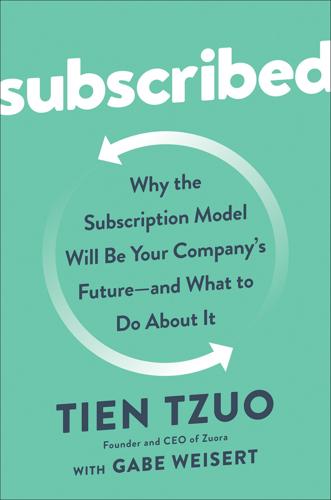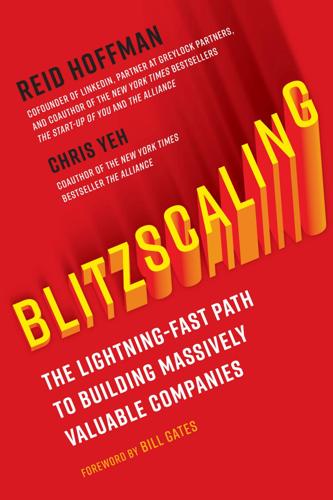transport as a service
description: the shift from personal vehicle ownership to on-demand transportation services
6 results

Subscribed: Why the Subscription Model Will Be Your Company's Future - and What to Do About It
by
Tien Tzuo
and
Gabe Weisert
Published 4 Jun 2018
Helsinki is experimenting with a mobility planning app called Whim that generates instant itineraries that mix private and public transportation networks, and can even recommend healthier routes when the weather is nice. As The Economist notes, “Young urbanites, who have become accustomed to usership instead of ownership, find the notion of transport as a service both natural and appealing. Meanwhile the cost of running a car in a city goes ever upwards. Parking gets harder. Many city-dwellers are questioning whether the convenience is worth it. Between 1983 and 2014 the share of Americans aged 20–24 with a driving licence fell from 92% to 77%.” If there’s anything that these stories can tell us, it’s that transportation is rapidly evolving from a sequence of painful but necessary transactions toward an intuitive service that will eventually become seamlessly embedded in our daily lives.
…
Without control over the platform, PC hardware Horace Dediu, “IBM and Apple: Catharsis,” July 15, 2014, www.asymco.com/2014/07/15/catharsis. the cars weren’t connected “Subscribed San Francisco 2017 Opening Keynote,” Zuora Subscribed conference presentation, June 5, 2017, www.youtube.com/watch?v=fdDA7sRgMSQ. Americans aged 20–24 with a driving licence “Transport as a Service: It Starts with a Single App,” The Economist, September 29, 2016, www.economist.com/news/international/21707952-combining-old-and-new-ways-getting-around-will-transform-transportand-cities-too-it. CHAPTER 5: COMPANIES FORMERLY KNOWN AS NEWSPAPERS evidence of diminishment Eric Alterman, “Out of Print,” The New Yorker, March 31, 2008, www.newyorker.com/magazine/2008/03/31/out-of-print.

Platform Scale: How an Emerging Business Model Helps Startups Build Large Empires With Minimum Investment
by
Sangeet Paul Choudary
Published 14 Sep 2015
The subsequent billing for the call is charged on the basis of the exact call duration (See Figure 12). Uber’s business model requires three exchanges: 1.Transfer of information on cab availability from driver (producer) to traveler (consumer) in response to the transfer of a request; 2.Transfer of transportation-as-a-service from driver (producer) to traveler (consumer); 3.Transfer of money from traveler (consumer) to driver (producer). It is important to note that, even though the transfer of goods and services occurs outside the platform, the platform is best able to manage the transaction if it can track this transfer in some way.

Blitzscaling: The Lightning-Fast Path to Building Massively Valuable Companies
by
Reid Hoffman
and
Chris Yeh
Published 14 Apr 2018
In 2014, Aswath Damodaran, a professor of finance at NYU’s Stern School of Business, estimated that Uber was probably worth roughly $6 billion, based on its ability to ultimately win 10 percent of the global taxi market of $100 billion, or $10 billion. According to Uber’s own projections, in 2016 the company processed over $26 billion in payments. It’s safe to say that the $10 billion market was a serious underestimate, as the ease of use and lower cost of Uber and its competitors expanded the market for transportation-as-a-service. As Aaron Levie, the founder of the online file storage company Box noted in a tweet in 2014, “Sizing the market for a disruptor based on an incumbent’s market is like sizing a car industry off how many horses there were in 1910.” The other factor that can lead to underestimating a market is neglecting to account for expanding into additional markets.

The Business of Platforms: Strategy in the Age of Digital Competition, Innovation, and Power
by
Michael A. Cusumano
,
Annabelle Gawer
and
David B. Yoffie
Published 6 May 2019
In addition, many drivers multi-home (serve both Uber and Lyft, or conventional taxi companies). Therefore, Uber, Lyft, Didi Chuxing, and other ride-sharing companies have announced that their long-term strategy is to move away from being a pure platform, matching riders with drivers, toward a model of “transportation as a service,” in which they own or lease all their own vehicles, including both automobiles and bicycles or scooters. Tech companies like Google and most of the major automobile manufacturers like GM and Toyota were also investing aggressively in the same direction. Despite a long history of selling products, even the most conservative car companies see AI as the route toward becoming a service company.

The Inevitable: Understanding the 12 Technological Forces That Will Shape Our Future
by
Kevin Kelly
Published 6 Jun 2016
Even Amazon has gotten into the business of matching pros with joes who need home services (Amazon Home Services), from cleaning or setting up equipment to access to goat grazing for lawns. One reason so much money is flowing into the service frontier is that there are so many more ways to be a service than to be a product. The number of different ways to recast transportation as a service is almost unlimited. Uber is merely one variation. There are dozens more already established, and many more possible. The general approach for entrepreneurs is to unbundle the benefits of transportation (or any X) into separate constituent goods and then recombine them in new ways. Take transportation as an example.

Human Compatible: Artificial Intelligence and the Problem of Control
by
Stuart Russell
Published 7 Oct 2019
That’s how things used to be done in personal travel too: if you wanted to travel from Europe to Australia and back in the seventeenth century, it would have involved a huge project costing vast sums of money, requiring years of planning, and carrying a high risk of death. Now we are used to the idea of transportation as a service (TaaS): if you need to be in Melbourne early next week, it just requires a few taps on your phone and a relatively minuscule amount of money. General-purpose AI would be everything as a service (EaaS). There would be no need to employ armies of specialists in different disciplines, organized into hierarchies of contractors and subcontractors, in order to carry out a project.